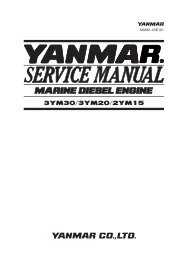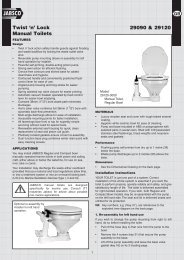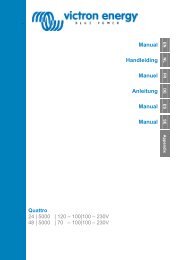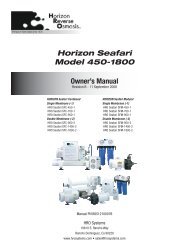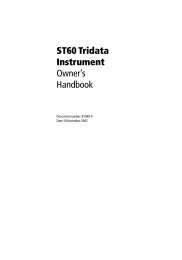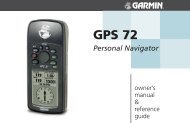Raymarine ST6001 - Zanshin
Raymarine ST6001 - Zanshin
Raymarine ST6001 - Zanshin
You also want an ePaper? Increase the reach of your titles
YUMPU automatically turns print PDFs into web optimized ePapers that Google loves.
Chapter 2: Basic Operation 13<br />
• with gybe inhibit on:<br />
• you will be able to perform an AutoTack into the wind<br />
• to prevent accidental gybes, the autopilot will prevent the boat<br />
from performing an AutoTack away from the wind<br />
• with gybe inhibit off:<br />
• you can perform an AutoTack into or away from the wind.<br />
Note: Gybe inhibit is switched on as a default. On Type 150/150G<br />
and Type 400/400G autopilots you can switch it off in User or Dealer<br />
Calibration (see page 83).<br />
Gusty conditions<br />
In gusty conditions, the course may tend to wander slightly,<br />
particularly if the sails are badly balanced. If you take the following<br />
precautions, the autopilot will be able to maintain competent control<br />
even in gale force conditions:<br />
• You can significantly improve course keeping by improving the<br />
sail balance:<br />
• do not allow the boat to heel over excessively<br />
• ease the mainsheet traveller to leeward to reduce heeling and<br />
weather helm<br />
• if necessary, reef the mainsail a little early<br />
• In very strong winds and large seas, you should avoid sailing with<br />
the wind dead astern:<br />
• ideally, bring the wind at least 30° away from a dead run<br />
• in severe conditions, you may also need to remove the<br />
mainsail and sail under headsail only<br />
2 Basic Operation








